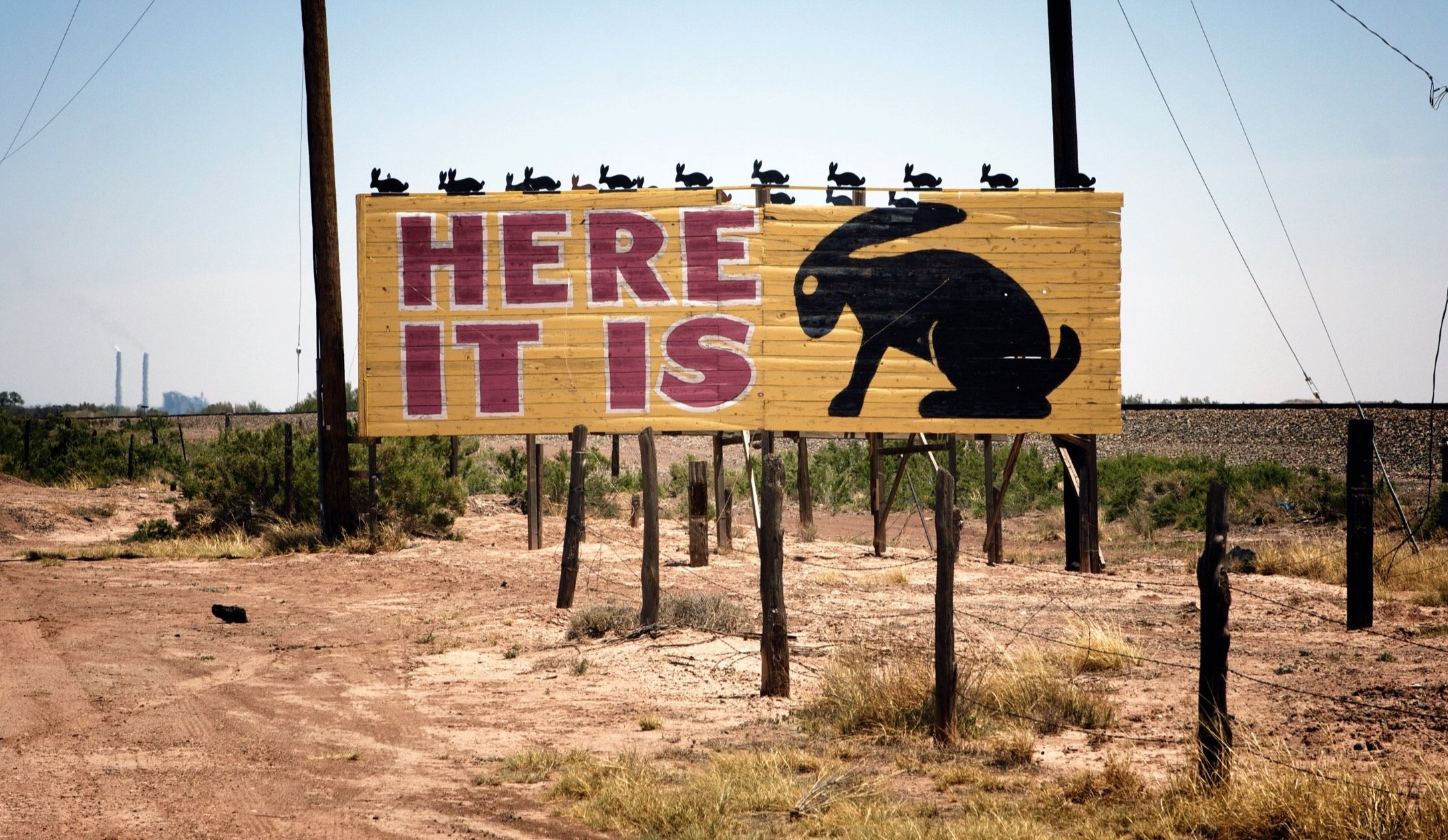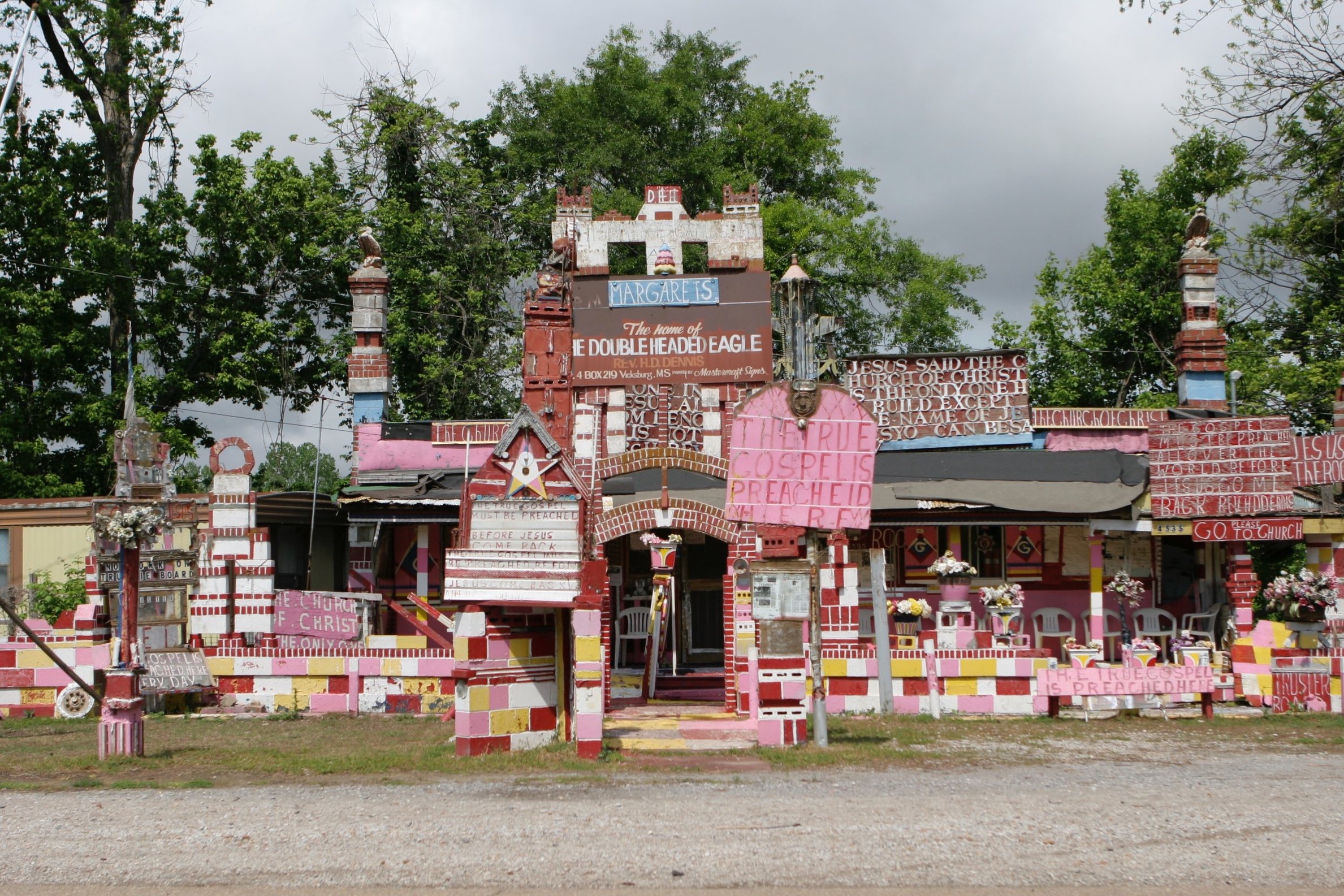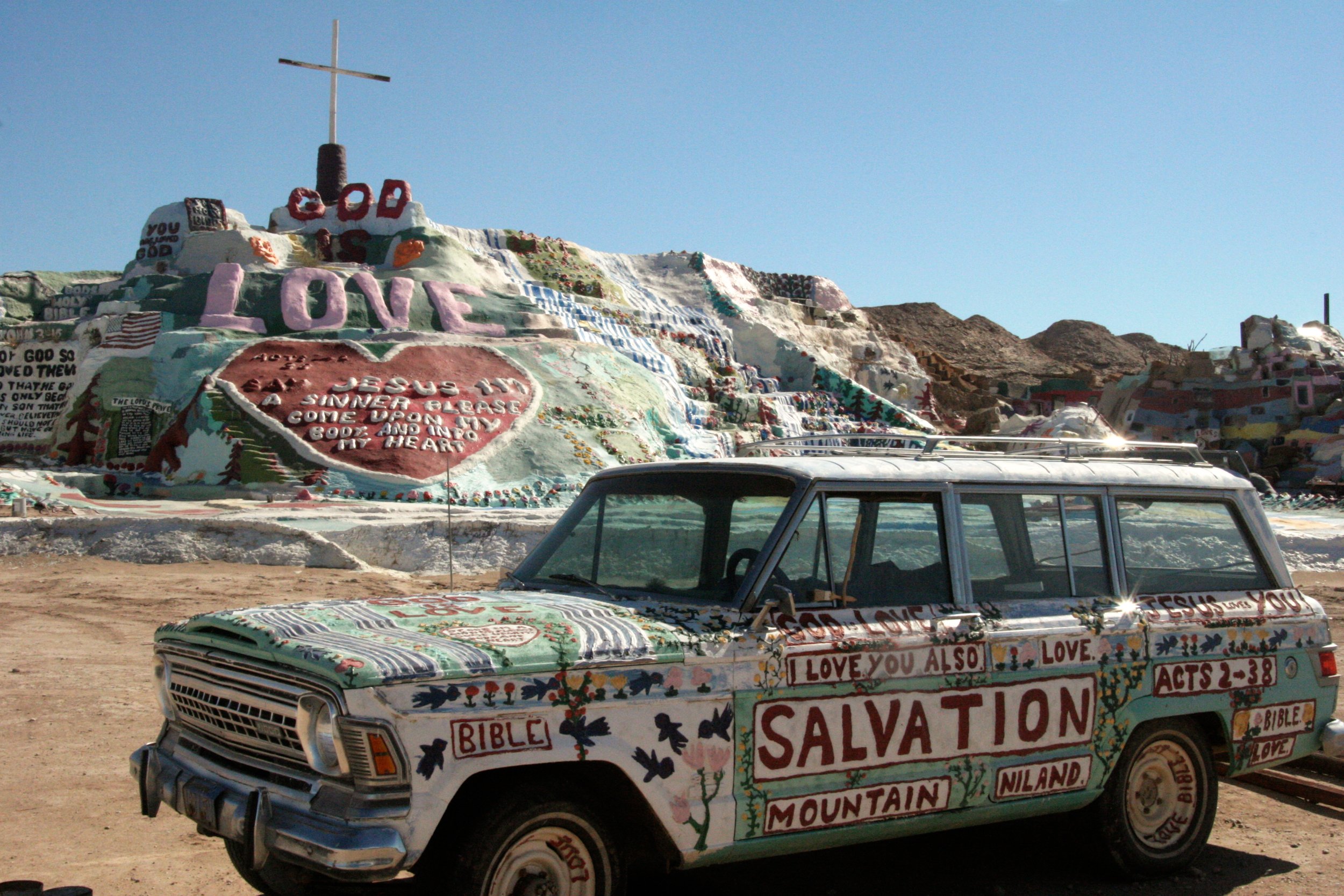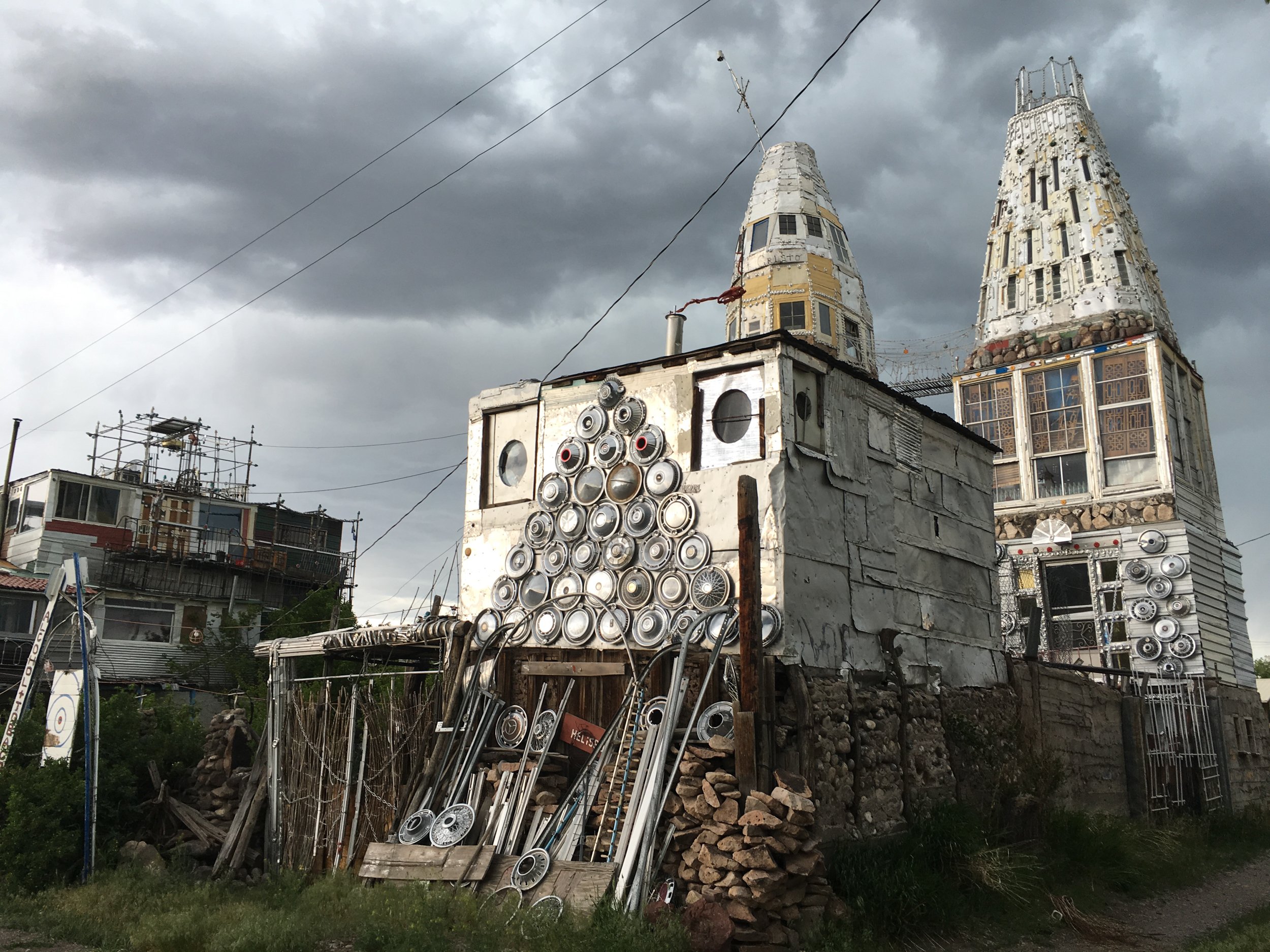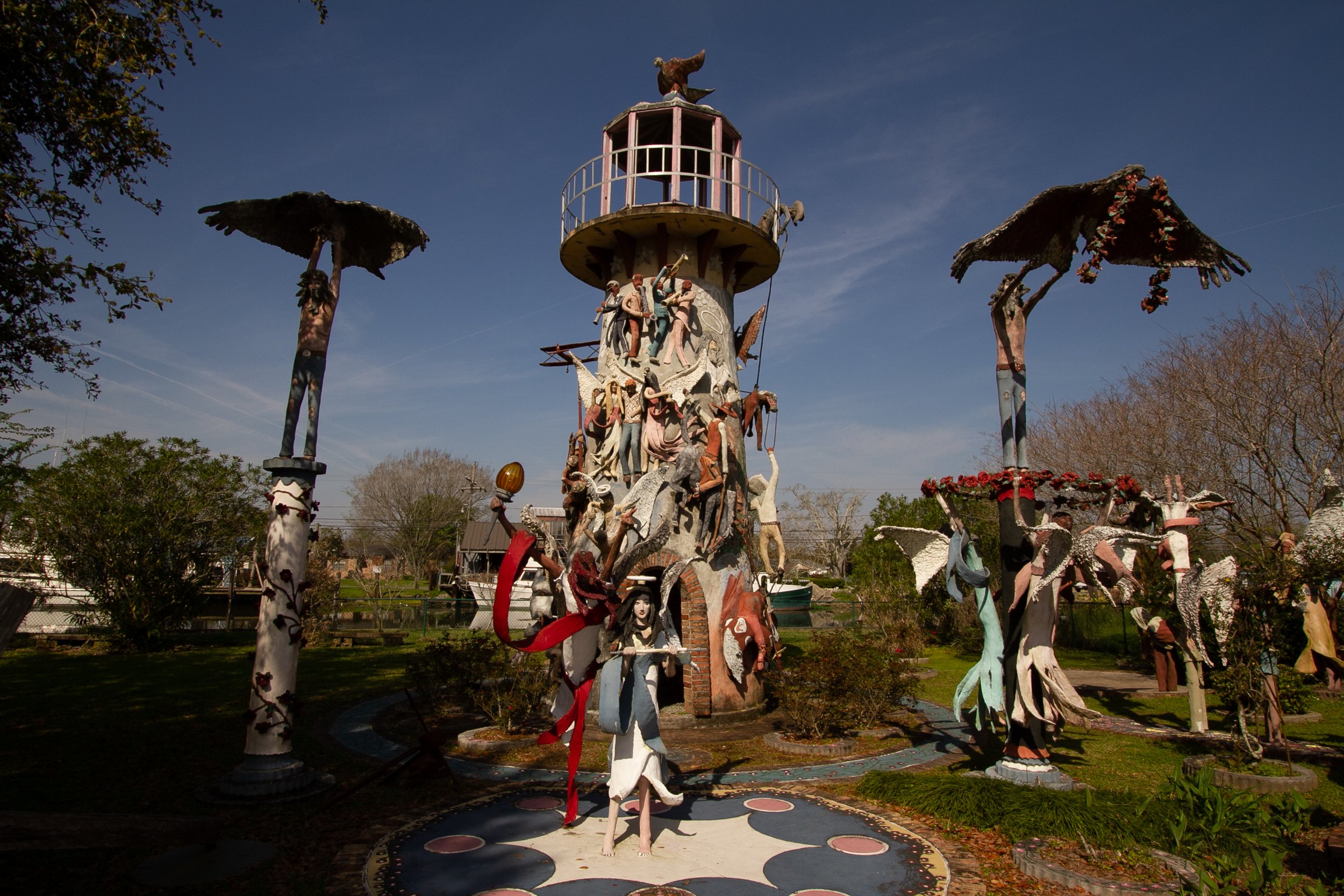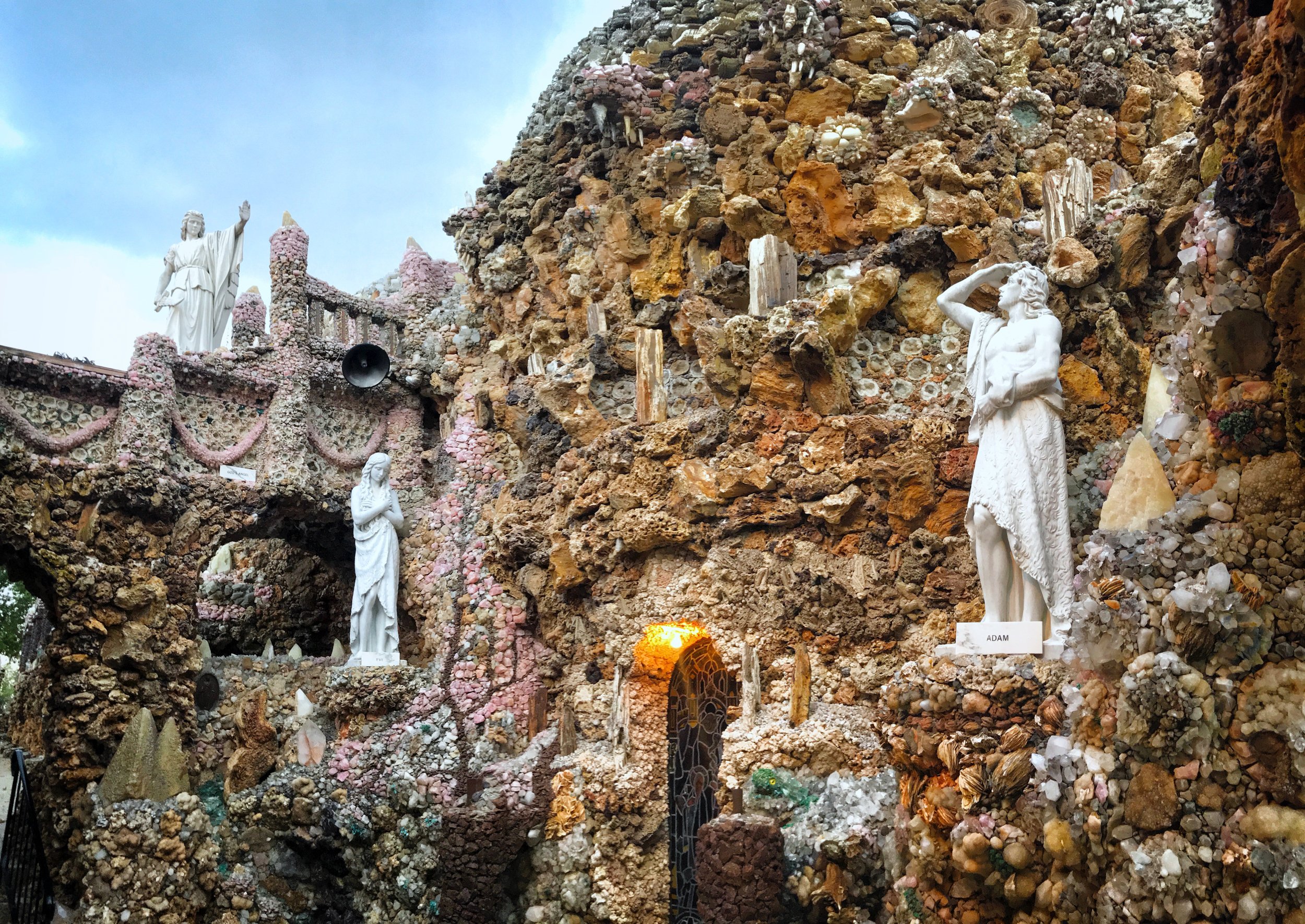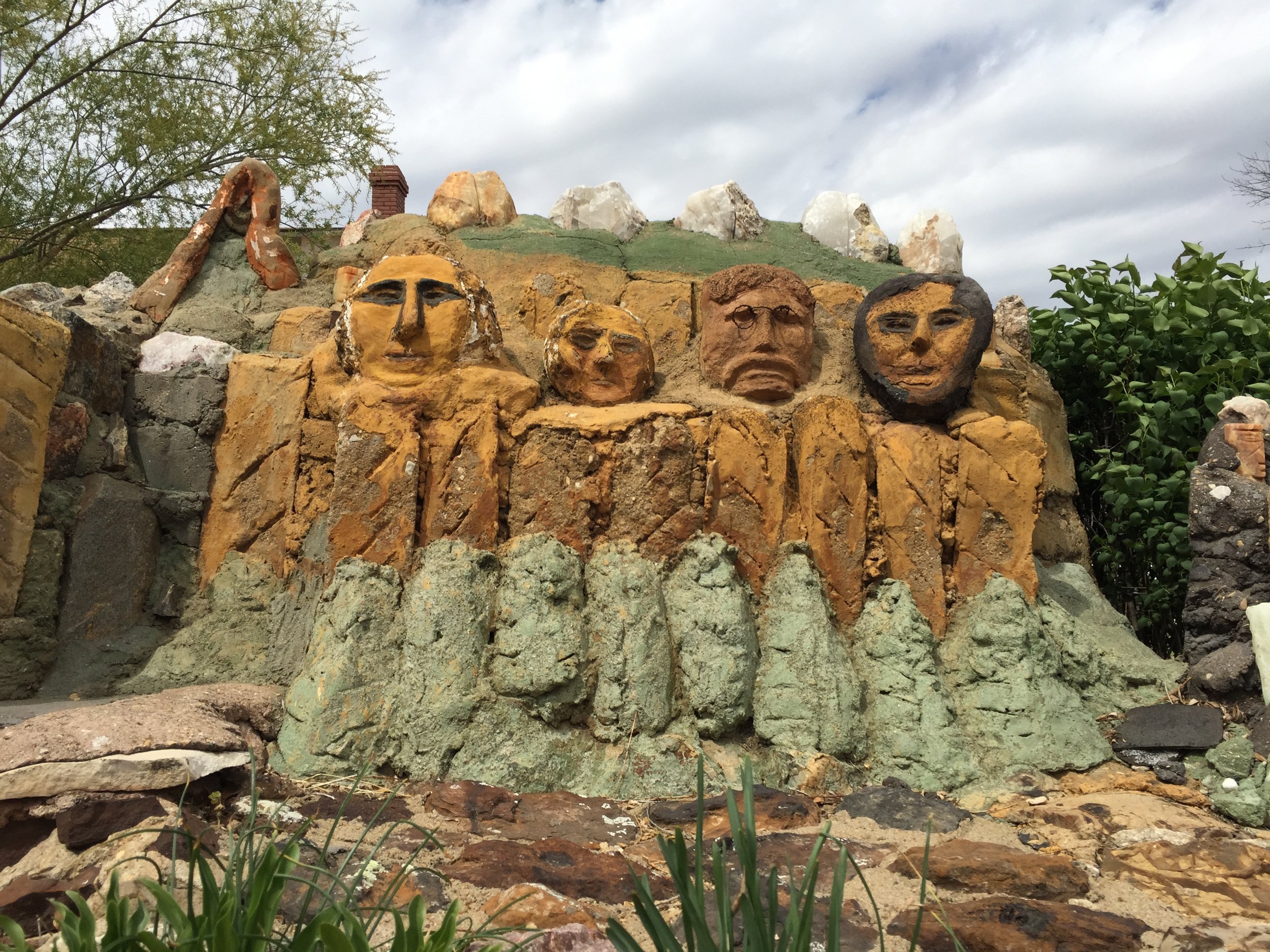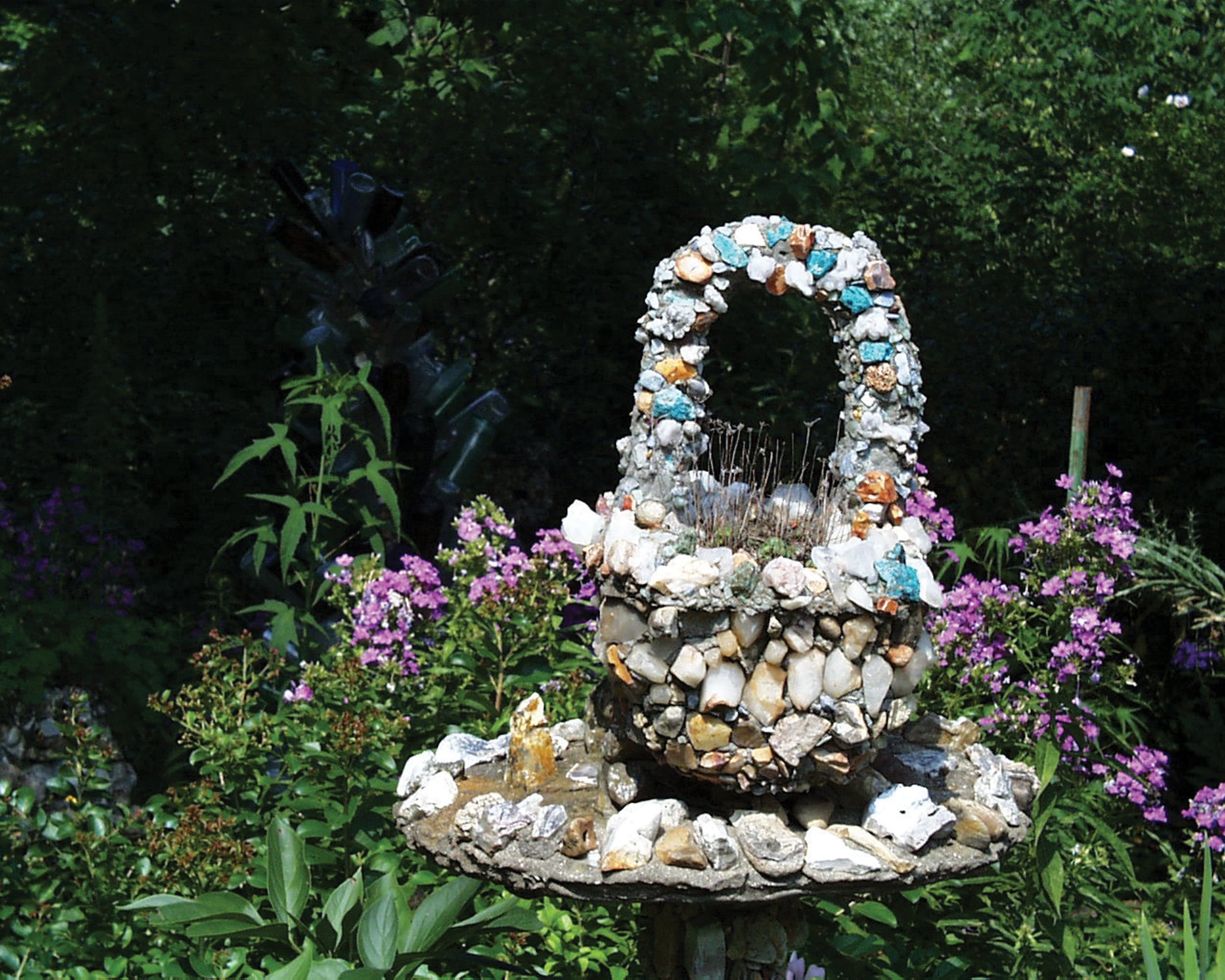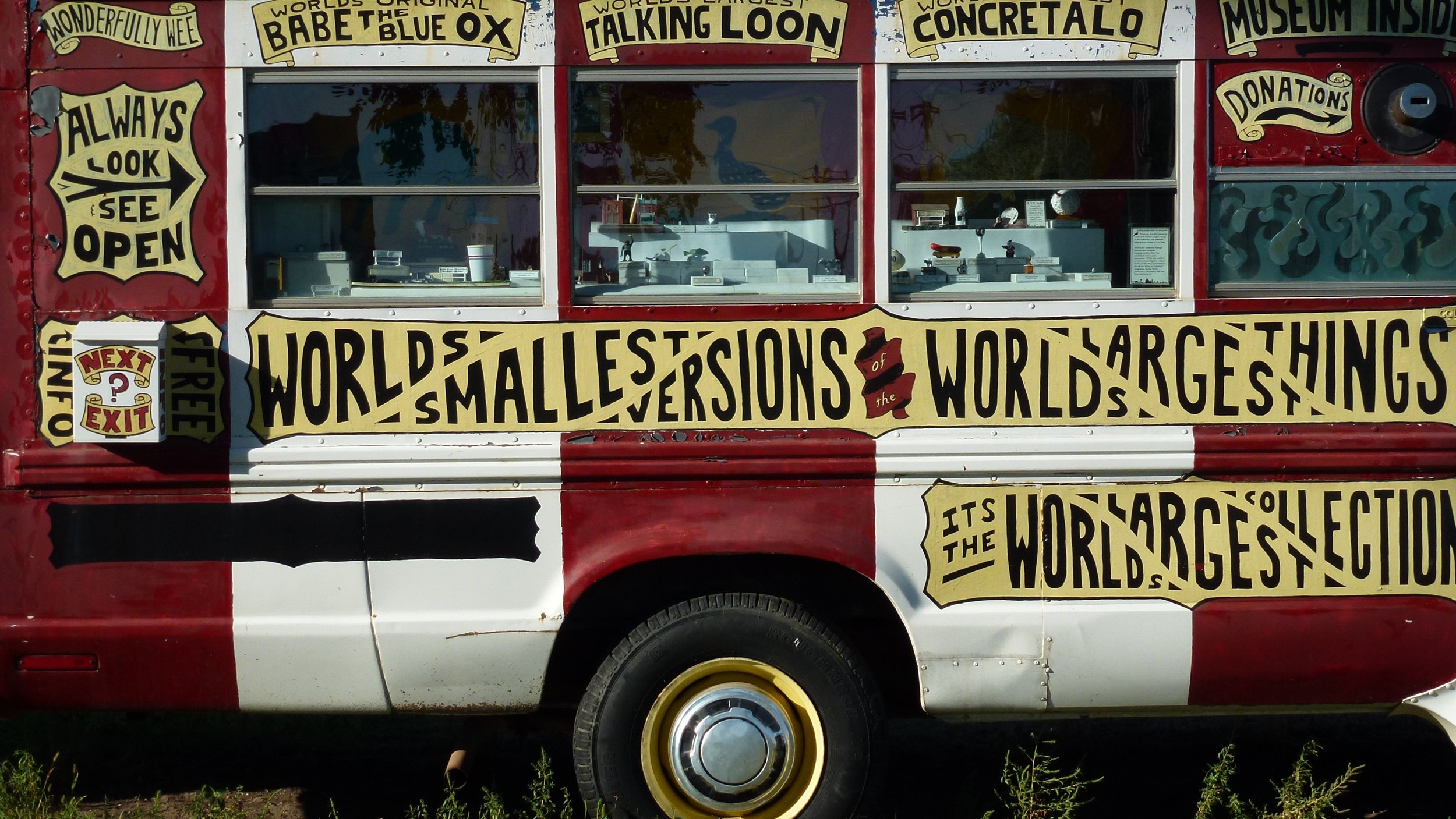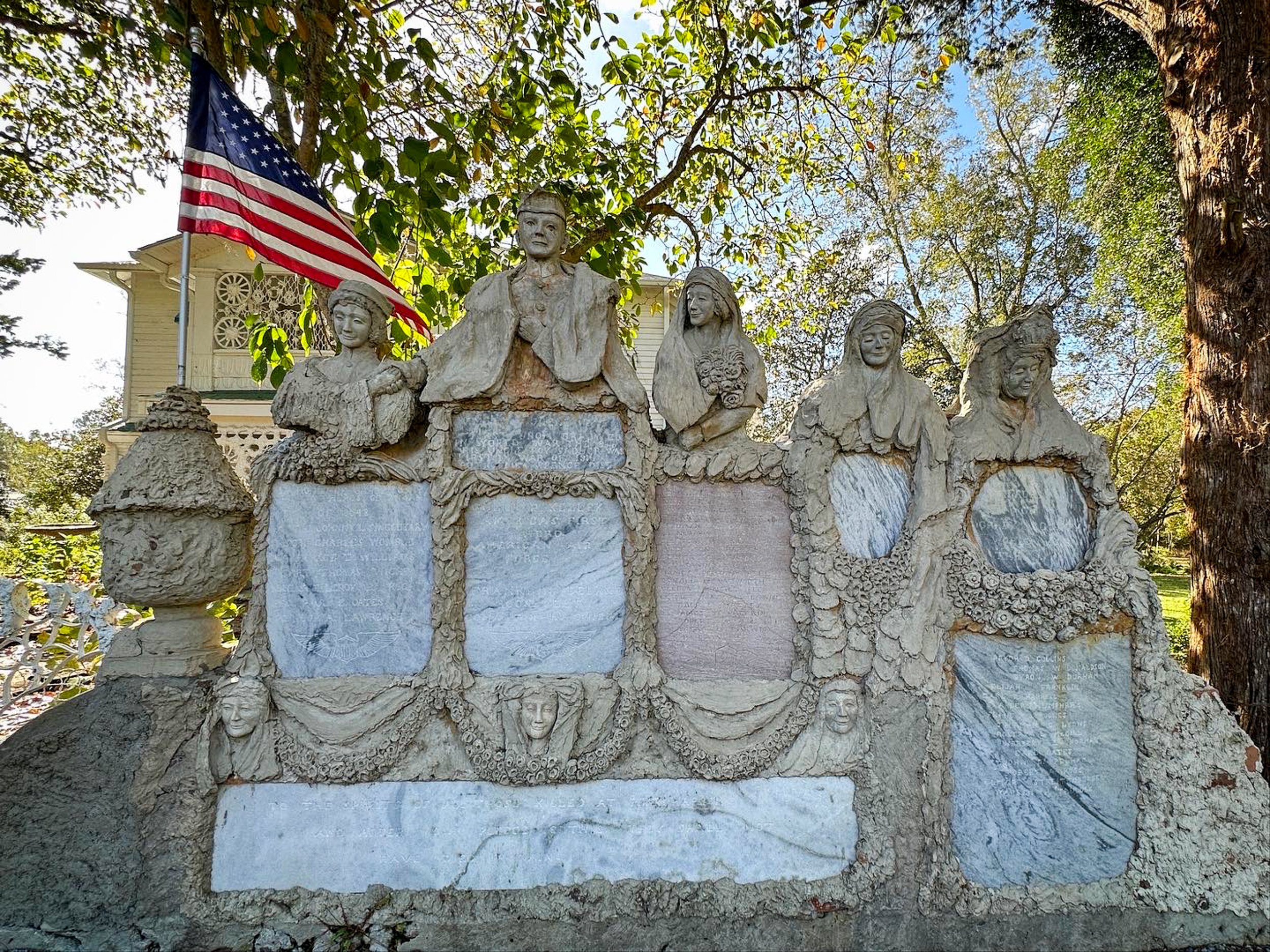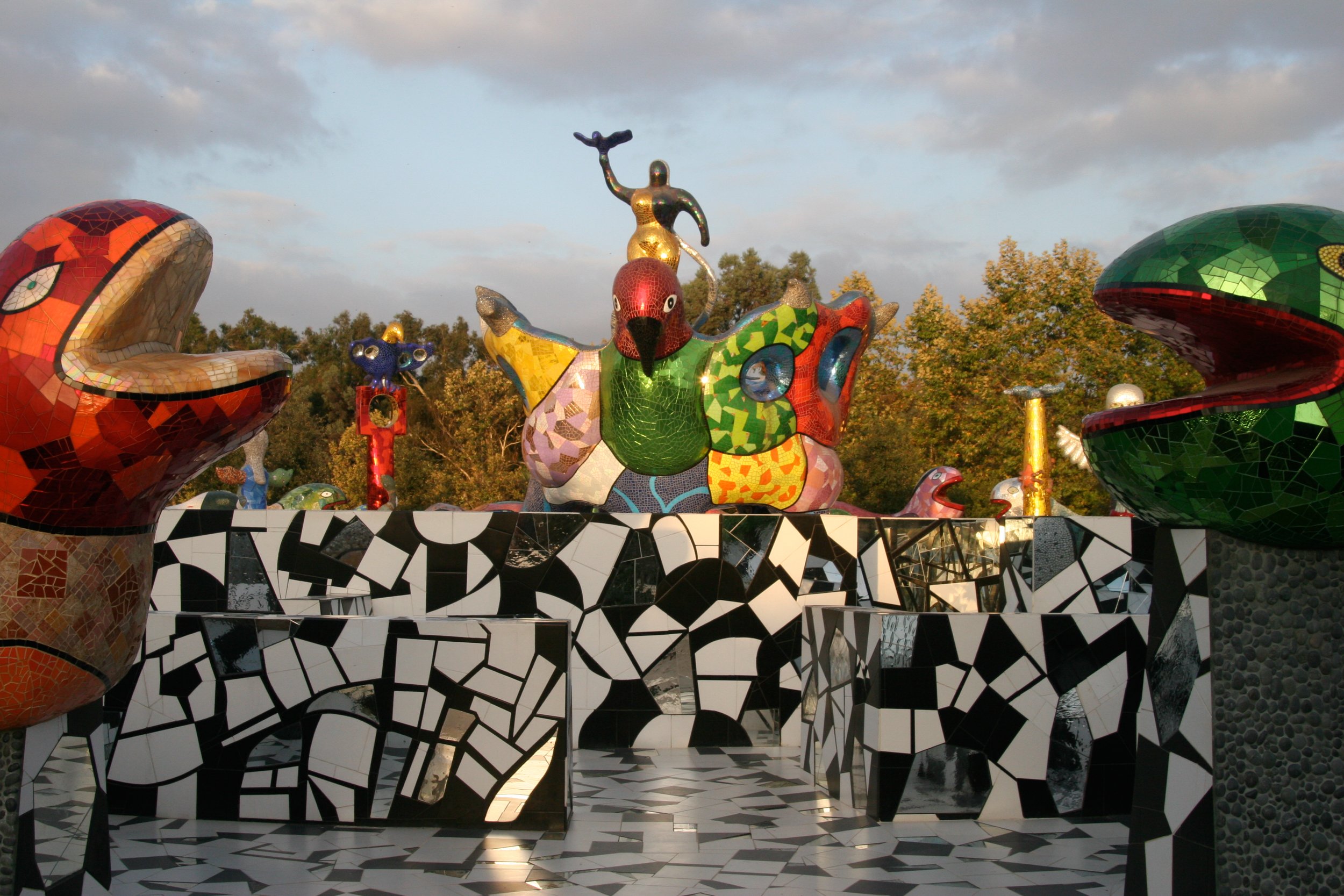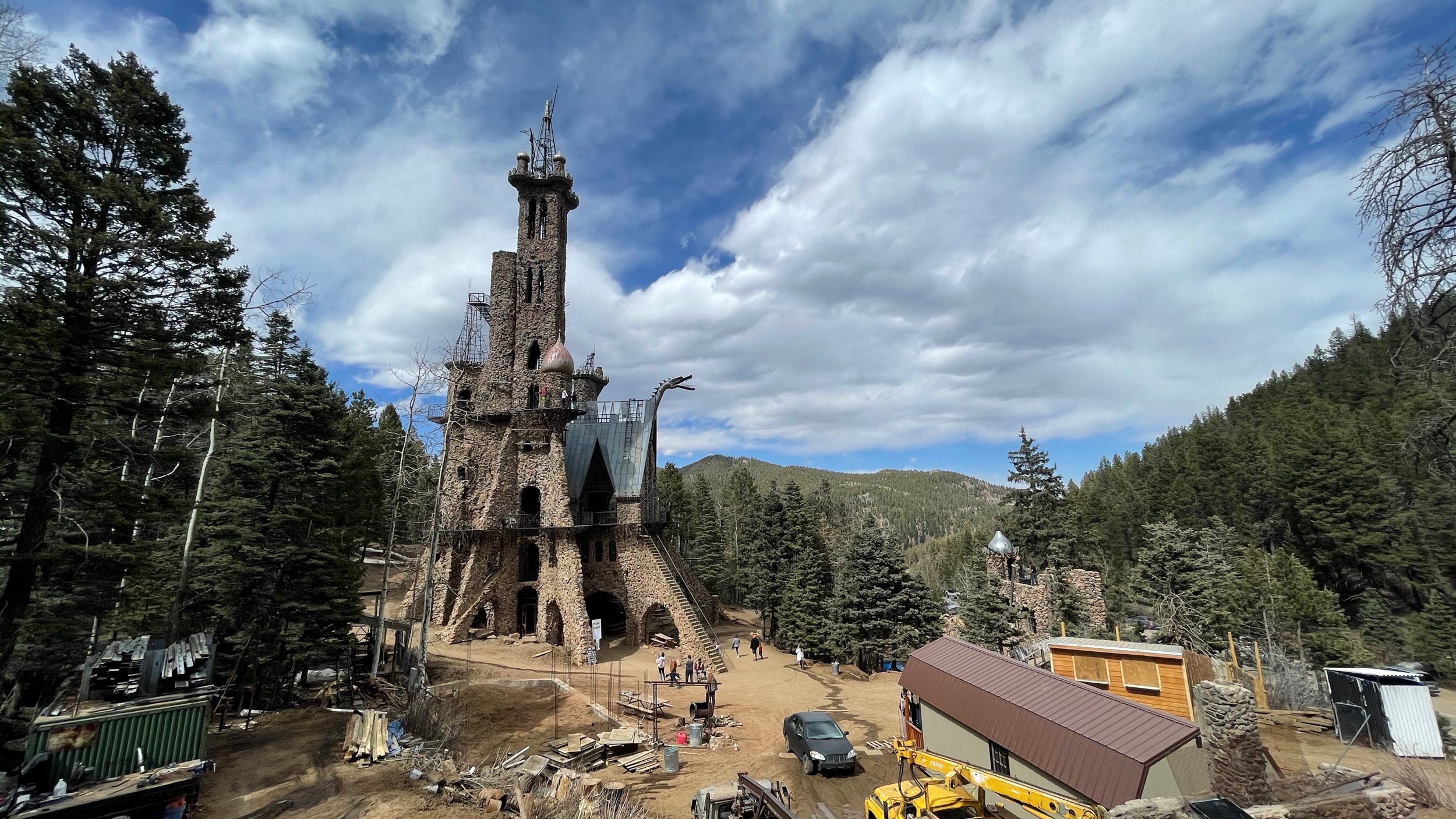
Detour Art
A curated guide to Artist-built Environments
region by region, coast-to-coast.
Dedicated to the sheer joy of outsider, folk, visionary, self-taught, vernacular art and environment discoveries found all along the back roads (and side streets).
Artist-built Environments in the United States
Note: Things change, so check first before arriving. When visiting art environments, remember they are usually on private property, so please be respectful and don’t trespass.
“PECULIAR TRAVEL SUGGESTIONS ARE DANCING LESSONS FROM GOD.”
— Kurt Vonnegut
Road stories
The Magnificent Mountain of Leonard Knight
Bottom line is this, Leonard wanted everybody to know that "God is love." Some people would say it in church or a book, write it in letters or a song, maybe even paint it in a picture. Leonard built a mountain in the desert. Unbelievable. Over a hundred thousand gallons of paint (we brought him three more) went into the sculpture/structure. He mixed his own adobe with mud and hay that he found nearby, old tires and other castoffs from the desert helped him build his complex.
Canos Castle - Dominic "Cano" Espinosa
Entirely made of recycled materials, with more than 100,000 beer and soda cans, hubcaps, screen doors, wooden windows, bicycle reflectors and more, this amazing folk art environment was built by Dominic "Cano" Espinosa, a Native American Vietnam vet. Inspired by "Vitamin Mary Jane" and Jesus, Espinoza has spent over 30 years working on his creation.
Watts Towers - Sabato (Simon, Sam) Rodia
This iconic artist-built environment of towers, structures, sculptures, pavement and walls were designed and built solely by Simon Rodia, an Italian immigrant construction worker over a period of 33 years from 1921 to 1954, in his own small yard near the train tracks in Watts. The collection of 17 interconnected sculptural towers, architectural structures, and individual sculptural features and mosaics, harken back to his upbringing in Nola, Italy and the celebration of the Feast of San Paolino.
Garden of Salvation - Kenny Hill
Kenny Hill is a bricklayer by trade. One day, for who knows what reason, he started working on a sculpture. It was a self-portrait, and he told a neighbor that if he liked it when it was done, he was going to make more. He must have liked it, because for the next twelve years, between bouts of earning a living, he toiled away on a small plot of land just off a bayou in Chauvin, Louisiana.
Working in concrete, he built life-size figures, telling his version of the story of salvation. There are angels holding horns, and angels with sand clocks, angels with swords, and angels playing harps, and then more angels after that. There's Christ on the cross, and the Gates of Heaven. There are lost souls, world-weary people, and there are self-portraits of Kenny, along the path at various stages. And, as you might expect, there are the Gates of Hell, as a reminder of the wrong path.
Second-Coming House - Prophet Isaiah Robertson
Isaiah Henry Roberson was a middle-aged home builder from Canada via Jamaica when he had a vision that the world would end in 2014 near Niagara Falls. He began to transform his humble home into a multi-colored showplace of awe. It was a beacon to all to be saved. If you were lucky enough to meet him, you would find yourself and your car sanctified, guaranteeing a safe journey until the apocalypse. The multicolored cut-outs that adorn his home are as bright as he was warm.
Grotto of the Redemption — The Epicenter of Midwestern Grottos
The eighth wonder of the world is in Iowa. At least, that's what the advertisements say, and who am I to argue with them? Rising out of the small town of West Bend (pop. 862), a part of Iowa where the landscape is seldom disturbed by anything larger than a grain silo, lies the Grotto of the Redemption. Grottos are a phenomenon we've seen a lot of over the years, but this one is King of the Hill.
Temple of Tolerance - Jim Bowsher
Jim Bowsher, philosopher, artist and teacher, has dedicated not only his 1-acre yard and his life to creating this weighty symbol of tolerance. The hundreds of tons of rock have been intentionally laid, creating a jaw-dropping stone wonderland. He loves local history. He loves having it come alive for people, and not just being some stuffy thing in a book. That's part of why he built what he calls the Temple of Tolerance in his backyard. Well, actually, in three backyards that he purchased to make room for the giant glacial rocks that stand at the heart of it.
Rock Garden and Concrete Postcards - Florence Deeble
Since 1935, Miss Deeble created miniature "postal card" scenes of the places she had visited or read about in books. Some of these included Mount Rushmore, Estes Park Conference Camp, and the Tetons. Florence worked the last 10 years of her life creating tributes to the Lucas City Band, founding fathers, a monument to her father and another to her brother, Burl, who served in WWII. She enjoyed visitors to her garden and carefully kept a guest book listing everyone who visited.
Quigley's Castle - Elise Quigley
In 1943, Elise Quigley asked her husband to build her a new house. Because she loved nature, she designed the house with 32 glass window boxes. When he didn't act quickly enough, Mrs. Q took matters into her own hands. She moved all their belongings out to the barn - forcing him to begin the building process. Along the way, she started adding the decorative rockwork that adds to its splendor. With a Plexiglass butterfly wall inside and bottle trees and stone fences around the grounds, Mrs. Quigley's digs are undeniably memorable.
World's Largest Collection of the World’s Smallest Versions of the World's Largest Things — Erika Nelson
Erika Nelson is a visionary artist, educator and one of America’s foremost experts and speakers on the World’s Largest Things. She is a national researcher and speaker on Grassroots Art environments, Roadside Attractions and Architecture, and the World’s Largest Things. Nelson is also the founder and curator of a unique and innovative traveling roadside attraction and museum called “The World’s Largest Collection of the World’s Smallest Versions of the World’s Largest Things.”
Fox Point Art Yard - Mary Nohl
Mary Nohl’s lakeside cottage and yard are replete with sculptures, paintings, and decorative elements. Inspired by her life on the shore of Lake Michigan, Nohl used every imaginable material to construct a colorful and whimsical world. The yard features fifty-nine concrete sculptures, many figural and life-size. Inside the house, almost every surface is adorned; she hand made stained glass, painted her furniture and walls using carpet swatches as brushes, and displayed her paintings and ceramics.
Tile House + Tree of Life - Beverley Magennis
The Tile House is considered an Albuquerque landmark. All original mosaic art work that covers the home was completed by ceramic artist Beverley Magennis. She tiled the interiors and exteriors of homes, including her own, with tiles, pennies, and mosaics. Beginning in 1984 with a mosaic border around the doorway, eleven years later the house was covered inside and out.
Mrs. Pope's Museum - Laura (Forester) Pope
Laura Pope built a sculpture garden that surrounded her general store and house in a rural area near Ochlocknee, Georgia. It once included about 200 accomplished life-size cement figures of famous women and heroes of both World Wars, Martha Berry, Red Cross, Gold Star Mothers, and many others, including local school teachers.
Margaret's Grocery and Market - Rev. Hermon D. and Margaret Dennis
Between 1959 and 1979, Margaret’s Grocery was the only grocery store owned and operated by a Black woman along Highway 61. Rev. Dennis painted the building red, white, and some blue, but Margaret added the crowning touches of pink and yellow. "You can't have a bouquet of flowers without different colors. We're all God's children." This premier folk art environment has fallen into disrepair with hopes that the Mississippi Folk Art Foundation can do restoration.
Queen Califia's Magical Circle - Niki de Saint Phalle
Snakes atop the walls, fabulous mosaics and a giant eagle with an Amazon warrior guiding it, Those are just some of the elements of the Magic Circle, created by Kiki de Saint Phalle, a French-born self-taught artist whose large scale sculptures earned her accolades in Europe. Influenced by figures such as Jean Dubuffet and Antoni Gaudi, she made her reputation in the Sixties with a series of giant female figures, the “Nana’s”.
Bishop's Castle - Jim Bishop
Soaring towards the clouds for some 16 stories in all, it's made from stone; hand selected, hand carried, hand lifted and mortared into place by, you guessed it, hand. Jim Bishop's hands. He's been working the site for nearly 50 years now
Paradise in the middle of Kansas - Garden of Eden
This jaw-dropper is the oldest complete folk art environment in the United States, creating a creative epicenter in this rural Kansas town. OK, it's not exactly the exact Garden in the Bible, but Samuel P. Dinsmoor began pouring forth his vision in 1907 when, at the age of 64, he completed his Log Cabin Home, built from native limestone. Then, using the newest building compound of its day -- concrete -- he spent the next 18 years surrounding his house with a narrative sculpture garden.

